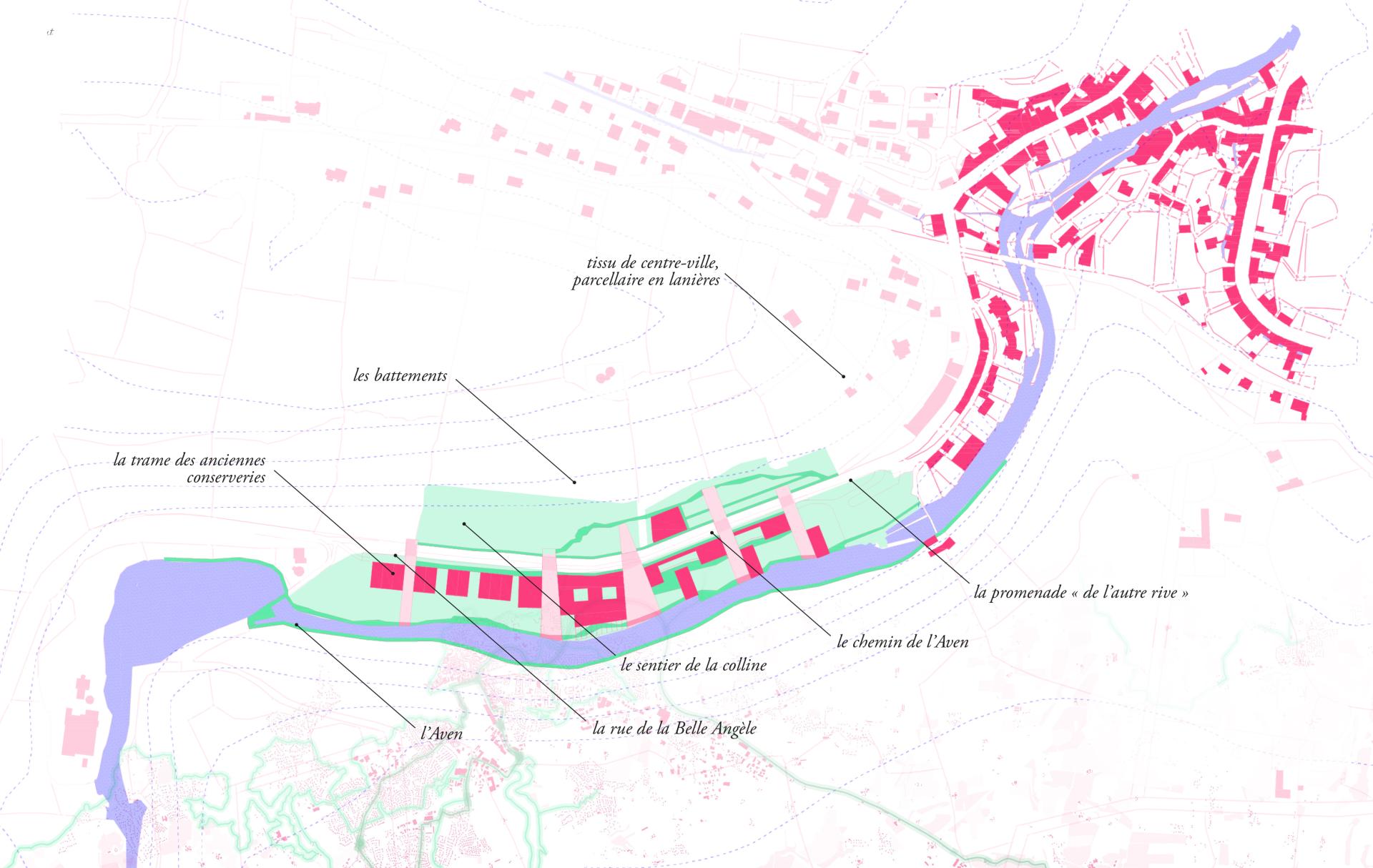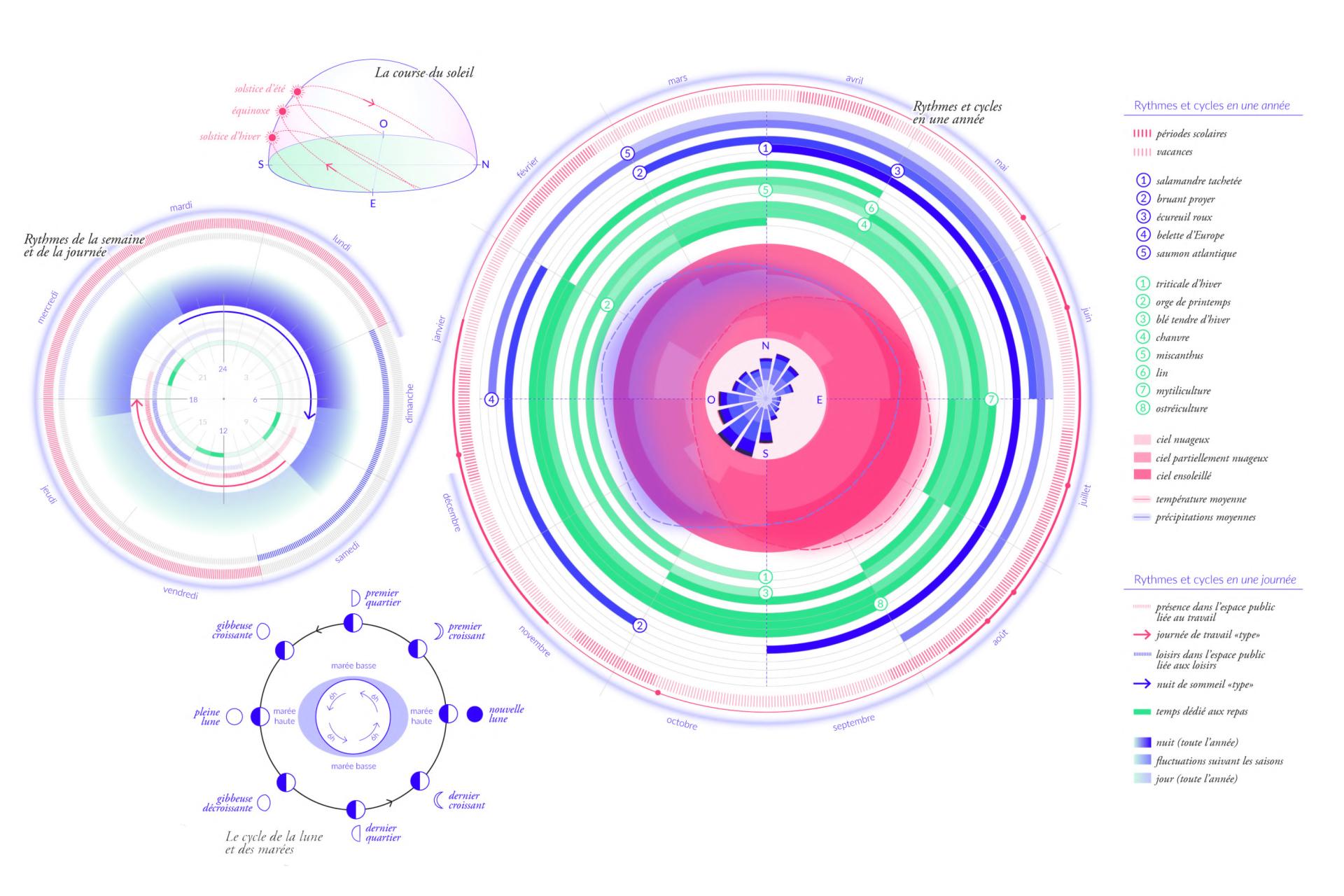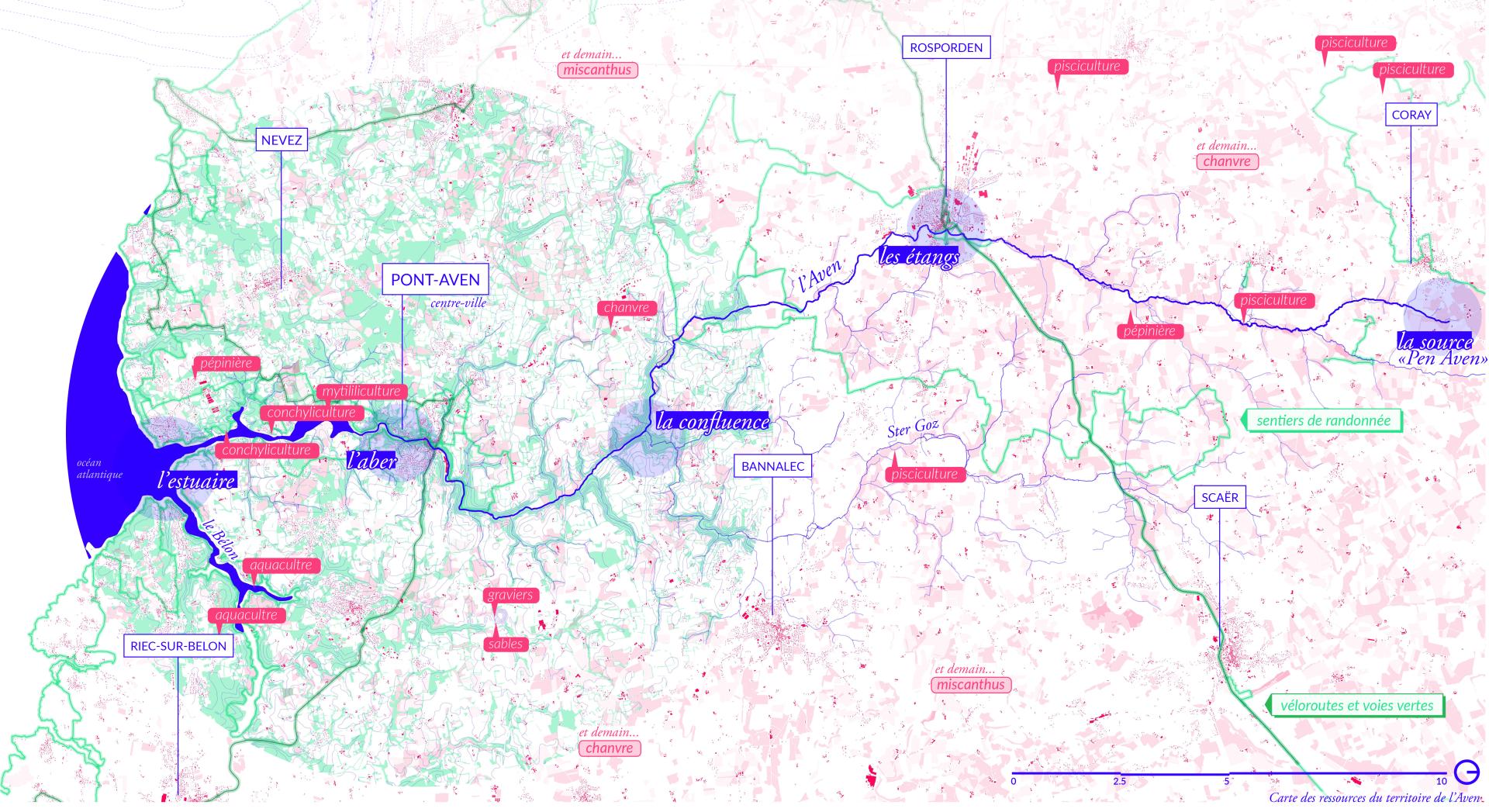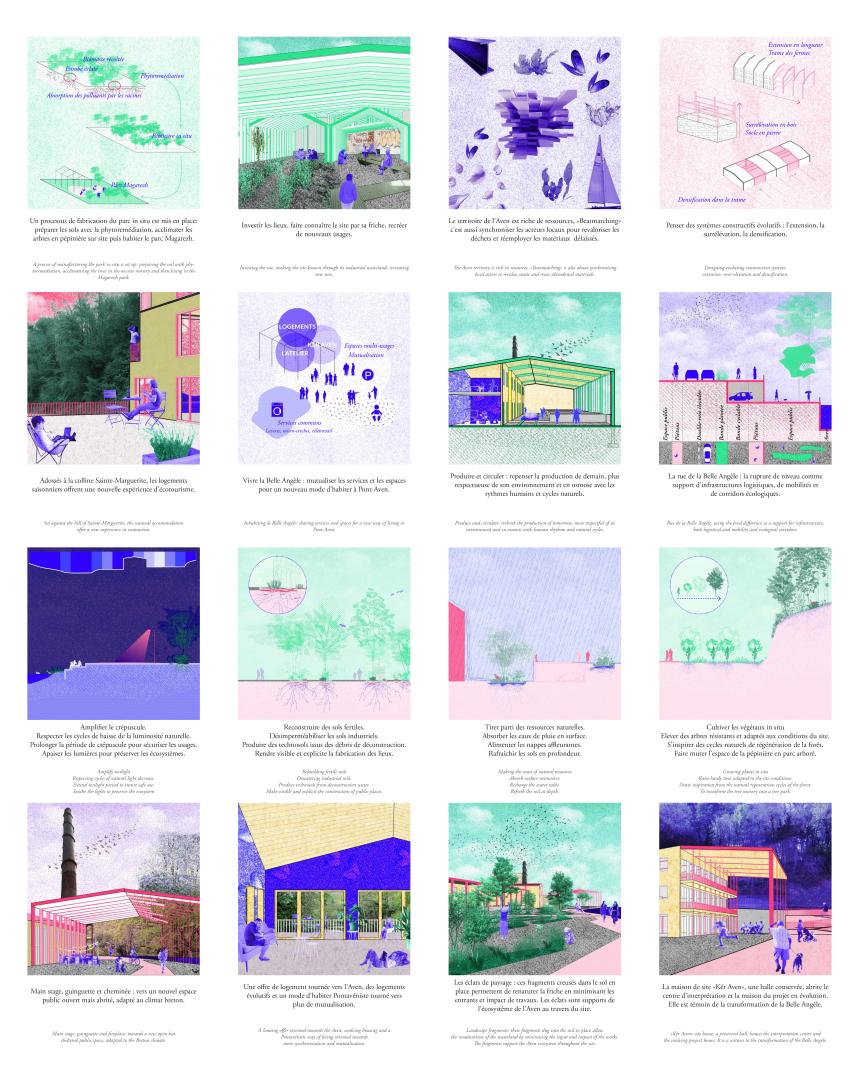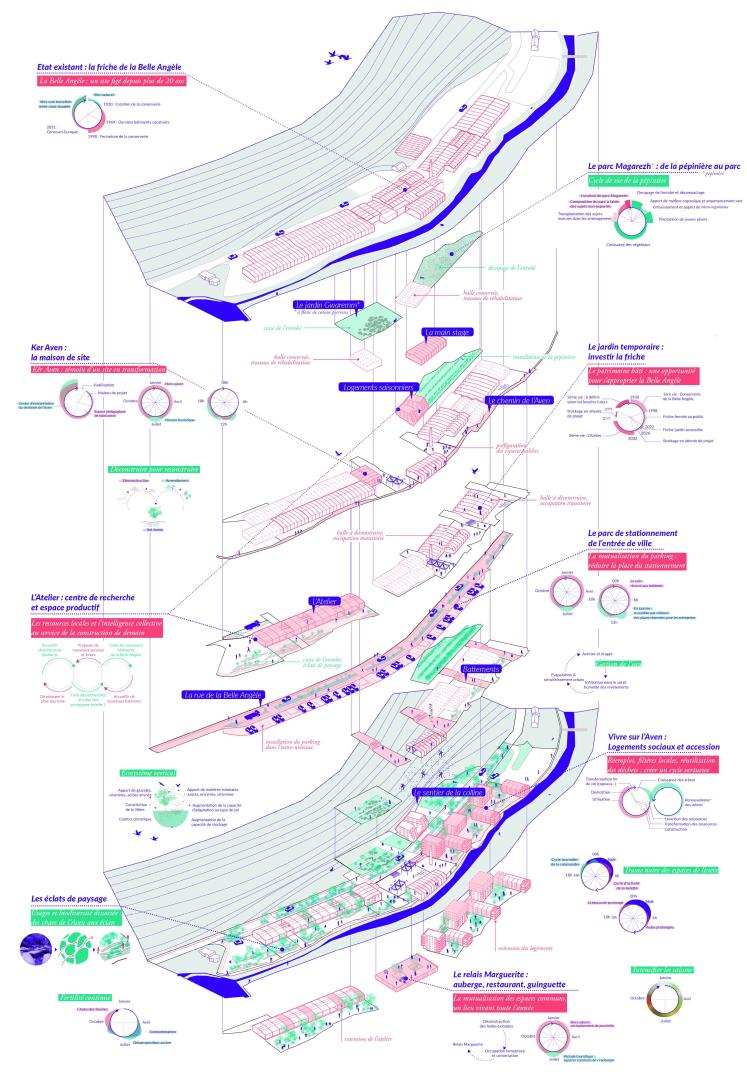Beatmatching
Basic information
Project Title
Category
Project Description
As an entry point to Pont-Aven, Belle Angèle is an industrial wasteland located between rurality, urbanity and river : a convergence point of living temporalities. Grounded on their mutual synchronizations, our project advocates a new way of inhabiting its territory by balancing humans’ rhythms and natural cycles. Tools for this territorial mutation include revitalization and reemployment of the existing infrastructure. "Beatmatching” aims to orchestrate times, rhythm and cycles.
Geographical Scope
Project Region
Urban or rural issues
Physical or other transformations
EU Programme or fund
Which funds
Description of the project
Summary
Our project is developed on the site of the Belle Angèle in Pont-Aven, in Brittany, on an industrial wasteland of a former cannery.
We propose to consider time as a material for tomorrow's urbanism: the project proposes to revive this industrial wasteland by synchronizing human and non-human rhythms, and natural cycles (water, soil, climate...) both in the spatial and temporal development of architectures and public spaces.
From the potentials of the wasteland site and the Aven watershed, we imagine situated tools, put at the service of the activation, programming, fabrication and collective construction of a common project. It is a question of composing with the Pont-Aven's inhabitants, at the threshold of their city, a district-workshop to test and adopt a temporality and a more organic urban space founded on the decompartmentalization, the mutualization, the modularity and the reversibility of the places and the uses. Then, if it works, to spread them on the whole territory of Aven. We propose here a first collection of the resources, temporal or material, which the territory has, an adapted toolbox, leading to the illustration of a possibility, among others, of development of the site in space and in time. Without imposing a locked program, a strict division or a precise phasing, we wish to sketch out tracks, to awaken curiosity, and to give the desire, to collectively "remix" the Belle Angèle.
Key objectives for sustainability
The pandemic has created a sudden pause in our urban lives. So far governed by the frenetic tempo of a lifestyle based on clocks rather than on natural life cycle, sun and seasons. When this humming suddenly stopped, we took measure of time. The linearity of the day and compartmentalization of activities and places dissipated for a moment to offer short rest to all living organisms. Thanks to a spring season spent inside, some people could afford the time to observe the transformation of vegetation in the countryside. They could listen to the birds singing in the city and dream of a life at this pace. Unfortunately, once the wave had passed, everything started to move again. The pace of our lives speeded up once more. However, we became aware that time, rhythms and cycles are important parameters when thinking about urban planning. Time is short: climate change requires us to change how we conceive cities and how we live in them. It requires us to pay attention to the rhythms of each individual, especially those for whom time is a luxury.
Environmental sustainability issues are addressed in a transversal way, on various themes:
- Materials :
Reuse, recycle materials on site (metal trusses, asphalt...)
Create and experiment with new materials from waste (molds, etc.)
Use local materials, from virtuous channels (wood, ...)
- Biodiversity :
Create a plant nursery on site at the beginning of the project which will then be used on the rest of the wasteland
Reconstitute the living soil, either in the two parks/nursery planned, or along the Aven river by creating fragments of macadam, allowing nature to take its place
- Buildings:
Thinking of evolutive buildings, able to adapt to the needs (change of program, extension, ...) by constructive systems, allowing to consider a construction on the long term
Mutualize the needs and services of the inhabitants, to reduce the equipment and the energy expenses of the district (laundry, parking, shared coworking...)
Key objectives for aesthetics and quality
The experience and quality of this new space is based on the intrinsic qualities of the site and local resources. In particular, we propose to:
Offer to the inhabitants this piece of town, by opening it to the public, and thanks to the creation of a promenade along the Aven, while reconnecting it with the existing city center
- Redefining the development of the city entrance to requalify it, make it accessible to pedestrians, plant it and green it
- Open views on the Aven and the Bois d'Amour thanks to "beats" perpendicular to the Aven, which offer porosities in the district
- Be inspired by the local architecture, the existing buildings on site, the characteristic striped fabric along the Aven
- To take up the local construction methods (stone, wood, ...) to fit in with the aesthetics of Pont-Aven.
- Pay specific attention to the views from the housing and the different programs and public spaces towards the surrounding nature: Aven, Sainte-Marguerite hill, Bois d'Amour
Key objectives for inclusion
Our project proposes to compose with the Pontavénistes a "workshop-district" which takes advantage of its situation at the entrance of the city to test and adopt a temporality and a more organic urban space based on the decompartmentalization, the mutualization, the modularity and the reversibility of the places and the uses. Then, if it works, to spread them over the territory of Aven.
We proposed a first gathering of the resources, temporal or material, which the territory has, associated with an adapted and located toolbox. From there, we chose to illustrate one possibility, among others, of development of the site in space and in time. Inspired by the new project processes, we proposed, for example, to keep one of the halls to act as a project house and to host the architect-urban planners' offices from the feasibility study "in acts" to the construction site, as well as the times of co-construction between inhabitants. Just as the interstices of space are reappropriated for the benefit of activities of collective interest, the interstices of time allow us to invent the economic and legal alternatives that will ensure the operationality of the project. For us, the essential thing is not to impose a locked programming, a strict division or a precise phasing: we wished to sketch out tracks, to awaken curiosities, and to give the desire, to collectively "remix" the Belle Angèle.
More specifically, this translates into:
- Project house/interpretation center: involvement of the inhabitants in the project process, exhibition on local resources and know-how, place of memory of the former industrial activities and witness site of the transformation of the Belle Angèle
- A program addressed to the inhabitants, to the locals: adapted housing (small and medium-sized areas), seasonal rentals, research and training center in connection with nearby universities and companies
- A space open to all from the beginning of the process to initiate the appropriation of the site
Physical or other transformations
Innovative character
The three hectares of Belle Angèle, to the edge of the river and in the hollow of the hillside, are ideally situated to welcome this rhythmic cacophony, to untangle it, amplify it, modulate it, and make it echo throughout the territory. We consider city entrance like the place where rhythms of living beings, human and non-human, are synchronised with natural cycles (water, soil, climate, etc.). Using the potential of the industrial wasteland and the Aven watershed, we imagine situated tools for the activation, programming, fabrication and collective construction of a common project. It’s about composing, with the Pontavénistes, at their city gate, a workshop-district to test and adopt a more organic temporality and urban space based on decompartmentalisation, mutualisation, modularity and reversibility of places and uses. Then spread them over the whole Aven’s territory. We propose an initial collection of resources, temporal and material, available in the area, an adapted toolbox as well as the illustration of one possibility, among others, for the development of the site in space and time.

